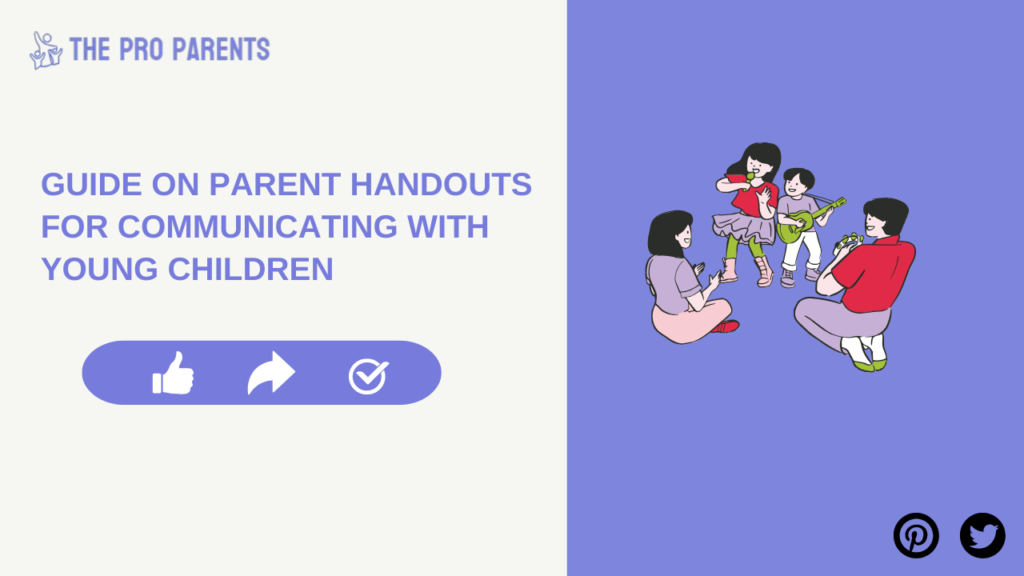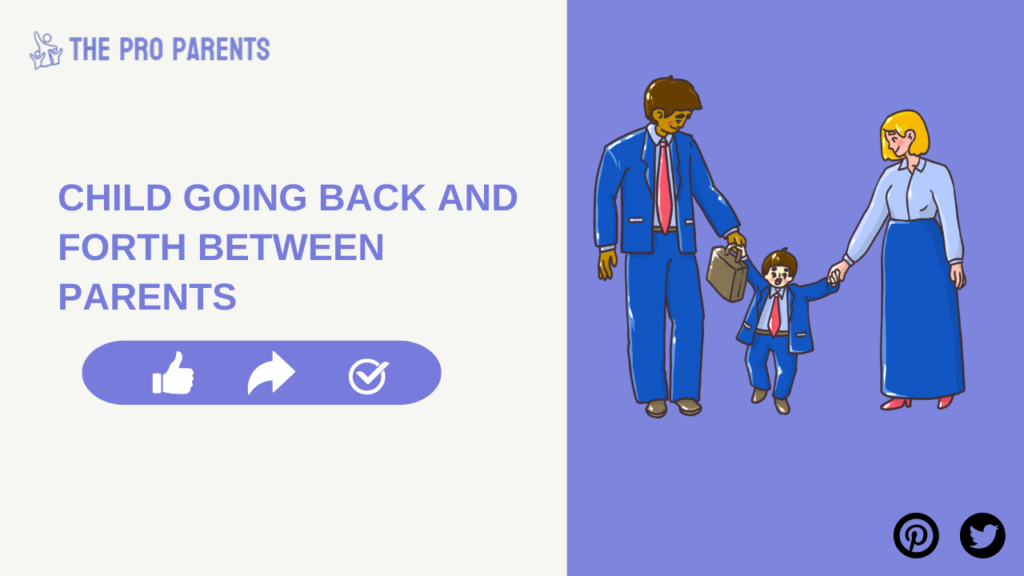Effective communication is the cornerstone of a strong parent-child relationship, especially when it comes to young children. During these formative years, children are learning to express themselves, manage emotions, and understand the world around them. As parents, it can sometimes be overwhelming to know how best to communicate with young children, especially when they are still developing their language skills and emotional regulation.
Table of Contents
One of the most useful tools in this process is parent handouts for communicating with young children. These handouts are resources designed to provide parents with clear guidelines and actionable strategies to improve their communication with their children. Whether you’re struggling with tantrums, trying to foster better behavior, or just want to improve day-to-day conversations, these handouts can be a game-changer.
In this article, we will explore the importance of effective communication, the benefits of parent handouts, and how to use them to foster a deeper connection with your young child.
Why Communication with Young Children Matters

Effective communication is not just about conveying information. It’s about connecting with your child in a meaningful way that fosters emotional and cognitive development. At a young age, children are developing crucial language skills, emotional intelligence, and social behavior, all of which are directly influenced by how parents communicate with them.
- Language Development: Children begin absorbing language at birth, and by the time they are toddlers, they start to imitate the words they hear around them. The way you speak to them and the language you use has a direct impact on their vocabulary and ability to understand complex sentences.
- Emotional Regulation: Communication is key to helping children understand and manage their emotions. When children can express how they feel and are heard, it helps them develop emotional intelligence and the ability to regulate their feelings as they grow.
- Behavioral Development: Effective communication strategies help teach children important social skills such as sharing, taking turns, and managing conflict. Without these communication strategies, children may struggle to interact appropriately with others, leading to behavioral challenges.
By investing time in improving communication with your young child, you are not just enhancing your relationship, but also supporting their overall development. This is where parent handouts for communicating with young children come in.
What Are Parent Handouts for Communicating with Young Children?

Parent handouts for communicating with young children are practical guides and worksheets designed to help parents foster better communication with their children. These handouts can be printed or downloaded digitally and are often structured around specific communication techniques or challenges that parents face.
Here’s what you can expect from these handouts:
- Clear Instructions: Most parent handouts provide simple, step-by-step guidance on how to implement specific communication techniques. Whether it’s how to get your child to listen more attentively or how to encourage them to speak in full sentences, these handouts provide structured strategies.
- Printable Worksheets: Some handouts come with printable worksheets or activities that parents can do with their children. These worksheets can include conversation prompts, emotional recognition exercises, and even games to make communication fun.
- Behavioral Tips: Many handouts focus on managing difficult behaviors like tantrums, defiance, or frustration. They offer simple techniques that parents can apply immediately to help de-escalate tense situations.
- Age-Appropriate Suggestions: Since communication strategies differ across developmental stages, parent handouts for communicating with young children are often divided into age groups (toddlers, preschoolers, etc.). This ensures that the guidance is suitable for your child’s developmental level.
Benefits of Parent Handouts for Communicating with Young Children
Using parent handouts for communication comes with several key benefits:
1. Strengthens the Parent-Child Bond
By following the strategies outlined in the handouts, parents can develop a stronger connection with their children. Consistent, meaningful communication helps build trust and emotional security. When children feel heard and understood, they are more likely to express their feelings openly and cooperate with their parents.
2. Promotes Language and Cognitive Development
Effective communication supports language acquisition and cognitive development. Activities like storytelling, asking open-ended questions, and engaging in meaningful conversations can enhance your child’s vocabulary and comprehension skills. Handouts often provide specific exercises that target these developmental milestones.
3. Reduces Stressful Interactions
Parenting can be stressful, especially when miscommunication leads to frustration. Parent handouts for young children offer strategies for calming down both you and your child during difficult moments. Whether it’s dealing with a tantrum or a power struggle, these handouts provide actionable tips for resolving conflicts calmly and positively.
4. Improves Behavior Management
Many parent handouts focus on discipline strategies that promote positive behavior. By using clear communication and offering appropriate consequences, parents can teach their children right from wrong. These handouts help parents create a consistent, fair environment that encourages good behavior.
Key Communication Strategies in Parent Handouts

Below are some of the most common communication strategies found in parent handouts for communicating with young children:
1. Positive Language and Reinforcement
Rather than focusing on what your child shouldn’t do, parent handouts for communicating with young children often encourage positive language. For example, instead of saying, “Don’t yell,” try saying, “Let’s use a calm voice.” This approach not only teaches your child how to behave but also reinforces positive behavior by focusing on what they should do.
2. Active Listening
Active listening is a crucial communication skill, especially when dealing with young children. Parent handouts often provide tips on how to actively listen, such as making eye contact, nodding in acknowledgment, and reflecting on what your child says. This shows your child that their thoughts and feelings are valued, fostering an open and trusting relationship.
3. Setting Clear Expectations
It’s important to set clear expectations with young children. For example, if you want them to share their toys, explain the importance of taking turns and encourage positive reinforcement when they do so. Handouts often include phrases and techniques for setting boundaries and giving instructions that are easy for young children to understand.
4. Use of Visual Aids
For younger children, especially those under the age of 4, parent handouts for communication often suggest using visual aids like emotion charts, picture cards, or even drawing to help them understand what they are being asked to do. These tools provide a visual representation of ideas, making it easier for young children to comprehend abstract concepts like emotions or turn-taking.
5. Modeling Behavior
Modeling positive behavior is one of the most effective ways to communicate with young children. Many parent handouts emphasize the importance of showing rather than just telling your child what to do. For example, if you want your child to say “please” and “thank you,” demonstrate this behavior consistently.
Creating Custom Parent Handouts for Your Child’s Needs

While there are many parent handouts for communicating with young children available online, sometimes you may need to create your own. Here’s how you can tailor them to your child’s specific needs:
- Assess Your Child’s Communication Skills: Consider your child’s age and developmental stage. If they are just learning to speak, your handouts should focus on language-building exercises. If they are older and able to understand more complex concepts, your handouts can delve into emotional regulation and problem-solving.
- Use Simple, Clear Language: Keep the language in the handouts simple and clear. Remember, your goal is to improve communication, so avoid complex jargon that might confuse your child.
- Include Fun Activities: Children learn best through play. Include activities such as storytelling, role-playing, or drawing that will make the communication process enjoyable.
Where to Find Parent Handouts for Communicating with Young Children

If you’re looking for ready-made resources, there are plenty of websites where you can find free or paid parent handouts for communicating with young children. Here are a few great options:
- Zero to Three: A nonprofit organization that provides resources for parents of young children, including handouts and printable guides.
- PBS Parents: Offers a variety of parent-child communication worksheets and activities.
- Scholastic: Provides downloadable PDFs and handouts for parents focusing on communication and early childhood education.
- Your Pediatrician or Early Childhood Educator: Many pediatricians and early childhood educators provide handouts during checkups or educational seminars.
Conclusion
Parent handouts for communicating with young children are an essential resource for parents who want to improve their communication skills and foster stronger, more positive relationships with their children. By incorporating the strategies and tips provided in these handouts, you can help your child develop crucial language skills, emotional intelligence, and social behaviors. Whether you’re using pre-made resources or creating your own, these handouts can make a world of difference in your parenting journey.
Invest in parent handouts for communicating with young children today and watch as you build a deeper, more meaningful connection with your child while supporting their development every step of the way.
FAQS
What are parent handouts for communicating with young children?
Parent handouts are simple, actionable guides to improve communication, boosting your child’s language, behavior, and emotional skills.
How can handouts enhance my child’s language development?
Handouts offer creative ways to encourage vocabulary growth, making learning fun and interactive for your child.
Do parent handouts help manage tantrums?
Yes! Handouts provide proven strategies to calm tantrums, validate emotions, and guide your child through tough moments.
Can I create my own parent handouts?
Absolutely! Customize your handouts with fun visuals and age-appropriate strategies tailored to your child’s needs.
Where can I find ready-to-use parent handouts?
You can find great resources online, like PBS Parents, or create your own using apps like Canva to suit your child’s needs.
How often should I use parent handouts?
Regular use—daily or weekly—reinforces effective communication and builds a stronger connection with your child.



